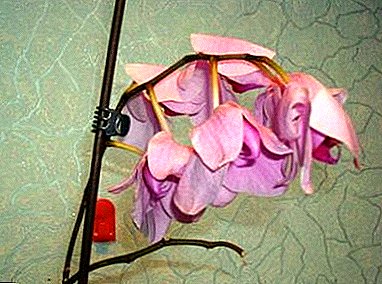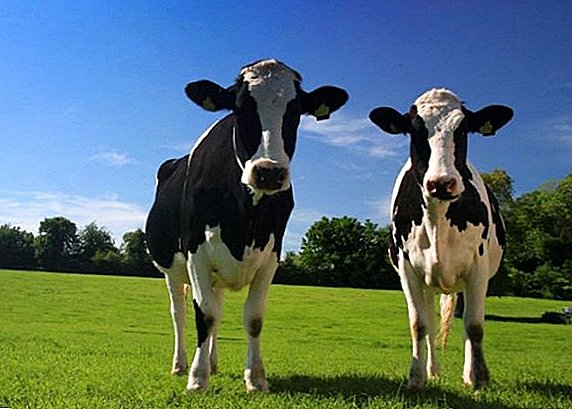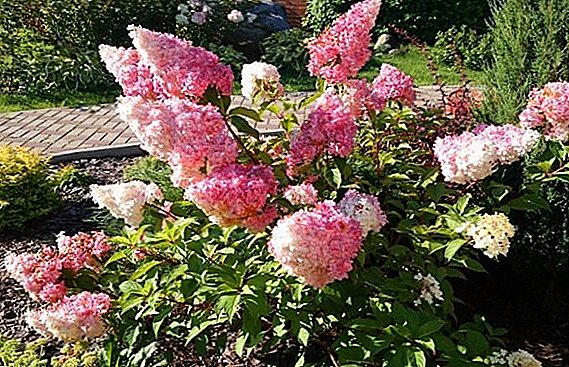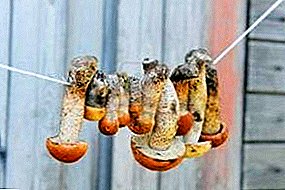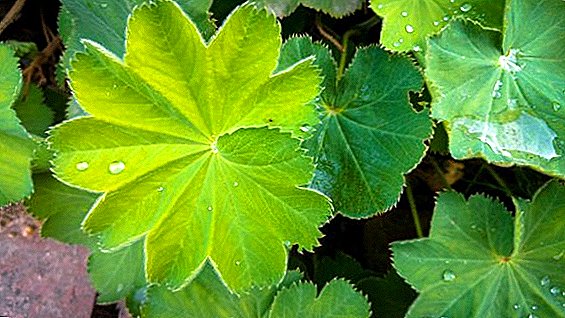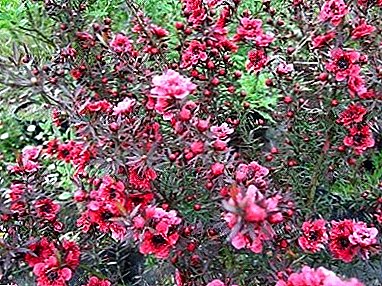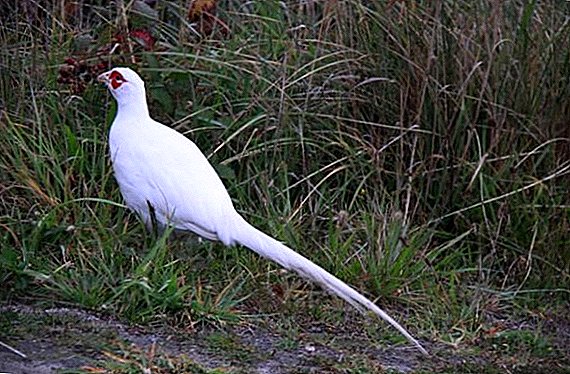 For true connoisseurs of exotic birds, a white pheasant can become a real decoration of the yard, because, besides its attractive appearance, it is distinguished by its grace and comparative simplicity in its care.
For true connoisseurs of exotic birds, a white pheasant can become a real decoration of the yard, because, besides its attractive appearance, it is distinguished by its grace and comparative simplicity in its care.
What does a white eared pheasant look like?
Many poultry farmers prefer this variety because of its elegant color, and with good conditions of keeping the plumage will always remain bright white. However, this is not the only advantage of white eared pheasant. 
Appearance and plumage
In addition to the white color of the body (by the way, the shade can vary from pure white to blue-white), a small black bird's head with a red area around the eyes and orange-yellow beaded eyes is no less noticeable.
The black cap on the pheasant's head feels very velvet to the touch, but the red areas are completely devoid of feathering. The pink beak is a powerful addition to the head.
Did you know? The common pheasant is considered the national bird of Georgia, where a national dish called chakhokhbili is made from its fillet. In addition, this bird is also a symbol of South Dakota.
The legs of the bird are short and strong, with spurs. The black-and-blue tail, consisting of 20 feathers, is much smaller than that of other eared pheasants, and as for the ears themselves, they are practically imperceptible in general.  The wings of the birds merge well with the body and have brown ends. The main distinguishing feature of the gender is the smaller size of the female compared with the male.
The wings of the birds merge well with the body and have brown ends. The main distinguishing feature of the gender is the smaller size of the female compared with the male.
Weight and dimensions
Males of birds are traditionally more females and are characterized by the following parameters:
- torso length - on average 93-96 cm;
- tail length - up to 58 cm;
- wing span - about 33-35 cm;
- weight - 2350-2750 g.
Check out the best breeds of pheasants, as well as learn about the peculiarities of keeping a golden pheasant at home.
As for the performance of females, although they are inferior to the above values, they still provide the birds with grace and greatness:
- torso length - 86-92 cm;
- tail length - 46-52 cm;
- wing span - up to 33 cm;
- weight - 1400-2050 g.
In nature, you can find larger representatives, but in any case, white eared pheasant is one of the largest representatives of the genus. 
Where dwells
In the territories of Russia, Ukraine and neighboring states, the described bird is found only in private breeding, since it lives in nature in western China and in eastern Indian lands.
She prefers the mountain forest zones of eastern Tibet, nesting mostly in pine and oak sparse forests, at an altitude of 3200-4200 m above sea level. The boundary of the range is considered to be a forest zone in rhododendron thickets located at 4,600 m above sea level.
Near the Yangtze River, these pheasants live on the slopes of rocks, among spirea, dogrose, juniper and barberries. In winter, birds can be found at an altitude of 2800 m, but in summer they do not go above the snow line.
Lifestyle and behavior
White eared pheasants love company, so they rarely go alone. They gather in large groups in mountain meadows, where they search for food, digging the soil with their beak. Flights are not their favorite pastime, therefore, if hunters come to the next with dogs, birds prefer to flee.  However, this does not mean that the birds do not know how to fly, on the contrary, in case of emergency they can overcome hundreds of meters in seconds, due to which their flight is often compared with the flight of a partridge or a royal pheasant.
However, this does not mean that the birds do not know how to fly, on the contrary, in case of emergency they can overcome hundreds of meters in seconds, due to which their flight is often compared with the flight of a partridge or a royal pheasant.
Both in summer and in winter, white eared pheasants prefer a sedentary way of life, and white plumage may be one of the adaptation requirements. The wide tail and sweeping wings, which resist well in the snow, help the bird to move through deep snow.
Even moving for short distances, birds leave distinct traces on the snow blanket, along which hunters can easily track them.
In very harsh frosty days, all representatives of the described species are as active as at any other time: they can look for food from the very morning until late evening, taking a break only in the middle of the day (usually the rest is near the springs and streams ).  Throughout the cold season, birds can stray into groups of up to 250 individuals, but often this value does not exceed thirty. During the breeding season, birds keep in pairs.
Throughout the cold season, birds can stray into groups of up to 250 individuals, but often this value does not exceed thirty. During the breeding season, birds keep in pairs.
Did you know? In Japanese Shinto pheasant is considered a messenger Amaterasu, the great sun goddess.
What eats white pheasant
Birds may well be called vegetarians, because, unlike their many relatives, most of the year they feed only on roots and other vegetation, often not far from ungulates.
The birds can slightly diversify their menu only in the summer, when cranberries and strawberries appear.
Since the beginning of the mating season, small invertebrates and insects appear in the diet of pheasants, but this does not last long and by the autumn the birds switch their attention to the fruits of juniper - the main food for the near future.  With the arrival of winter, the needles of the plant, wolf berries, dried seeds of lilies and irises are added to these berries. In the season of prolonged winter blizzards, the birds feed on pine needles, leftovers from rabbits and other animals.
With the arrival of winter, the needles of the plant, wolf berries, dried seeds of lilies and irises are added to these berries. In the season of prolonged winter blizzards, the birds feed on pine needles, leftovers from rabbits and other animals.
Breeding
The mating season for this species of pheasants starts at the end of spring and lasts until mid-June. Visible sexual dimorphism, as well as mating demonstrations, is weakly expressed in these birds, which only confirms the theory of their monogamy.
It will be useful for you to learn more about the breeding of pheasants at home, on the nutrition of pheasants, and also to read how to catch a pheasant with your own hands.
While caring for the chosen female, the male can run around her for hours, raising his tail, lowering his wings and trying to inflate the bright areas on his head as much as possible. All these actions are accompanied by current screams characteristic of pheasants, the sound of which extends to a distance of up to 3 kilometers.
It is very difficult to distinguish it from the marriage cry of a Tibetan eared pheasant, except that the rhythm is faster. Males shout mostly early in the morning and late in the evening.  When breeding in captivity with the beginning of the mating season, their aggressiveness towards their congeners also increases, therefore a sufficient space of an open-air cage with certain places for shelter is a mandatory requirement when breeding these birds.
When breeding in captivity with the beginning of the mating season, their aggressiveness towards their congeners also increases, therefore a sufficient space of an open-air cage with certain places for shelter is a mandatory requirement when breeding these birds.
In addition, trimming feathers on one wing of a fighter will help reduce aggression. Reproduction at home is possible if the poultry farmer has time to pick up eggs laid by pheasants and place them under chicken, turkey, or simply place them in an incubator and then place the nestlings in brooders.
Important! For successful incubation of eggs of white eared pheasant, it is necessary to provide them with reduced humidity, compared with traditional indicators when breeding other types of pheasants (not higher than 60-65%).
White-eared pheasants place their nests on the ground, choosing places under the spruce or at the base of the protruding rock. Later, 6–9 eggs appear in them, which the females lay with a break of several days.  The incubation period lasts 24-29 days, after which chicks weighing about 40 g each appear from the eggs. Toddlers grow fairly quickly and at the age of 10 days they can weigh 85 g, and on the 50th day of life this figure rises to 600 g.
The incubation period lasts 24-29 days, after which chicks weighing about 40 g each appear from the eggs. Toddlers grow fairly quickly and at the age of 10 days they can weigh 85 g, and on the 50th day of life this figure rises to 600 g.
Females are standardly smaller than males, so the difference in weight is approximately 50-70 g. Young birds reach adult birds only at the age of 5 months.
Absolutely all species of eared pheasants can mate with each other, and upon reaching adulthood (approximately two years), hybrids also produce offspring.
Is it possible to keep in captivity
There are many successful examples of keeping white eared pheasants in captivity. However, if you want to get offspring from them or simply create comfortable conditions for your wards, then it is worth considering the requirements for the aviary.
First of all, it must be large so that a couple of pheasants have at least 18 square meters. m square.  Smaller cages are suitable only if it is possible to release birds to a garden or park, where they can walk freely during the day. On such walking birds can stay in flocks, but in the cages it is still desirable to keep pheasants in pairs.
Smaller cages are suitable only if it is possible to release birds to a garden or park, where they can walk freely during the day. On such walking birds can stay in flocks, but in the cages it is still desirable to keep pheasants in pairs.
Important! In a limited space, birds often begin to eat feathers and peck at their feet, sometimes before wounds appear.
White eared pheasants are quite hardy and undemanding in bird care, able to withstand significant temperature drops. At the same time, the heat and direct sunlight are perceived by them much worse, in the same way as dampness in the room.
Therefore, given these requirements, birds can be left in covered enclosures in winter.  With proper upbringing (birds can even be trained), these birds can become a real decoration of any garden or park area, where they are almost the whole day in the same territory, tearing the soil with their beaks and pecking the roots found.
With proper upbringing (birds can even be trained), these birds can become a real decoration of any garden or park area, where they are almost the whole day in the same territory, tearing the soil with their beaks and pecking the roots found.
With regard to acceptable diet, it can be very diverse.
Of course, when breeding in captivity, it is very difficult to get familiar food, so breeders recommend using specially developed feeds (they should be 75% of the diet), greens and fruits, which share the remaining 25%, to feed white eared pheasants.
During the mating season, grapes, apples and hard-boiled eggs are used to feed the birds, although one should not exclude the possibility of birds eating wheat, oatmeal, crushed peas, finely chopped vegetables and root vegetables.  In winter, you can hang pine branches in the cage so that the birds can eat the needles.
In winter, you can hang pine branches in the cage so that the birds can eat the needles.
Those poultry farmers who already have experience in dealing with pheasants will find it easy to care for white eared birds without additional knowledge, but newcomers to this business still need to look more closely at this issue.



